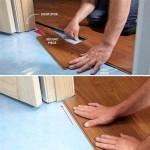When it comes to remodeling your kitchen, one of the most important aspects to consider is the flooring. Vinyl tile kitchen flooring is a popular choice for many homeowners. It’s cost-effective, easy to install and maintain, and provides a great look for your kitchen. In this guide, we’ll provide you with an in-depth look at the benefits of vinyl tile kitchen flooring, some tips for choosing the right type, and a few installation and maintenance tips to help your new flooring last.
Benefits of Vinyl Tile Kitchen Flooring
One of the primary benefits of vinyl tile kitchen flooring is its affordability. Vinyl tile tends to be one of the most cost-effective flooring options, making it ideal for those on a limited budget. Additionally, vinyl tile is easy to install and can be done as a DIY project for those with a bit of know-how. It’s also very low-maintenance and will last for many years with proper care.
Vinyl tile is also incredibly versatile and comes in a variety of styles, colors, and textures. This allows you to create a unique look for your kitchen that fits your style and décor. Plus, vinyl tile is water-resistant, making it a great option for kitchens that are prone to spills.
Choosing the Right Vinyl Tile
When choosing vinyl tile for your kitchen flooring, there are a few things to consider. First, look for a tile with a wear layer, which will help protect your floor from scratches and damage. Additionally, consider the thickness of the tile, as thicker tiles are more durable and will last longer. Finally, make sure to choose a tile with a non-slip finish, as this will help prevent slips and falls in your kitchen.
Be sure to do your research when choosing vinyl tile for your kitchen flooring. Look for tiles that are designed for kitchen use and compare prices and reviews to find the best option for your needs and budget.
Installing Vinyl Tile
Once you’ve chosen the right vinyl tile for your kitchen flooring, the next step is to install it. Installing vinyl tile is relatively easy, but it’s important that it’s done properly to ensure a long-lasting result. Before you begin, make sure that the subfloor is clean and level. You may need to use a leveling compound to ensure that the floor is even.
Next, use a measuring tape to mark the tile placement on the floor. Be sure to plan your layout ahead of time and make sure to leave enough space for expansion and contraction. Once the tiles are laid, use a roller to ensure that the tiles are firmly adhered to the floor. Finally, apply grout to the seams and wipe away any excess. Allow the grout to dry for 24 hours before walking on the floor.
Maintaining Vinyl Tile
Once your vinyl tile kitchen flooring is installed, you’ll want to keep it looking its best. Regular sweeping and mopping will help to keep dirt and debris from collecting on the tile. When mopping, use a damp mop and mild detergent to avoid damaging the tiles. Be sure to avoid using any abrasive cleaners or scrubbing too hard, as this could damage the tiles.
Additionally, if you notice any scratches or damage to the tile, it’s important to fix it as soon as possible. Vinyl tile can be easily repaired with a repair kit or patch, so be sure to keep one on hand in case of any damage.
Conclusion
Vinyl tile is an excellent choice for kitchen flooring. It’s affordable, easy to install, and requires very little maintenance. Plus, it comes in a variety of styles and colors, making it easy to create a unique look for your kitchen. With proper installation and maintenance, your vinyl tile kitchen flooring will last for many years.















Related Posts








